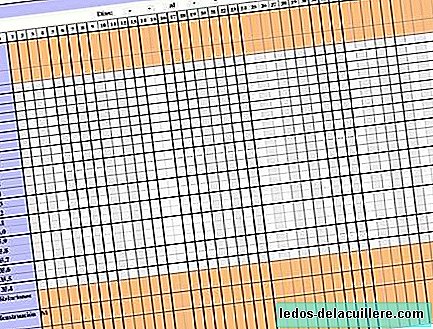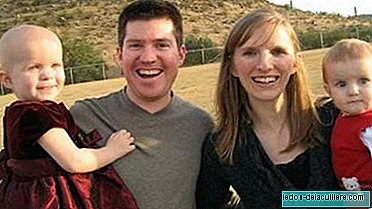
These days we have been talking about different methods to know what are the fertility days of women to try to get pregnant. It is a few days a month in which ovulation occurs, when the ovum is mature and ready to be fertilized.
The basal temperature is one of the methods that can help us know when the fertile days are, which requires annotation for several cycles of the woman's temperature. Here we bring you a fertility table based on basal temperature for printing.
We have already talked about everything necessary to understand how basal temperature is taken and interpreted correctly. By means of simple annotations and the constancy during several months we will be able to know which are the best days to achieve the pregnancy in regular cycles.
How to interpret the results in the fertility table
We remember that when the temperature increase is observed (between 0.3ºC and 0.5ºC) It has been 2 or 3 days since ovulation has occurred. The increase is maintained until the end of the cycle, when the next menstrual period begins.
In the table, the first day (we see an “M” of “menstruation”) is the one corresponding to the first day of the period. Every day at the same time and before getting up we will record our basal temperature. There will come a time in the annotations (in regular cycles, towards the middle) in which the temperature rises.
If for several months we observe that this temperature increase occurs, for example, on day 16, regularly, we will know that we ovulate between days 13 and 14, which is when we would have to have sex to achieve pregnancy, because that is when we have more likely
If our cycles are somewhat more irregular, the days will not be as concrete, but we can set approximate dates. We may also have an irregular cycle in isolation and then return to normal.
To obtain the blank table to make all your annotations you just have to click on the image that appears below, open the document and print it.

What are the different sections of the table for?
- The date. The table is headed by the date on which the cycle begins, and will last until menstruation returns. If we put the day and month we are in, it will be easier to have the tables located and sorted. Remember that we need to collect the data for several months, so several tables are needed. If we want we can write down the date of each day although it is not necessary.
- The time. It is important if one day we have not taken the temperature at the same time, in order to understand the possible temperature variation. Remember that for the method to be correct it is necessary to take the temperature every day at the same time approximately.
- The days of the cycle. In this table we have from 1 to 43. The usual thing is that we use until around day 30, but sometimes the cycles may be longer and if there is any irregularity and the menstruation is delayed it is necessary to continue pointing.
- Temperature. We will probably not use the lower or upper boxes, but we will stay in a midline of temperatures around 36 degrees.
- Relations. In case we want to write down the days in which we have had sex. Once we complete several tables and establish our cycle, we will know when is the most propitious time to have them if we seek pregnancy.
- Menstruation. The first day is marked with the "M" and we must continue writing down the letter during the days that the rule lasts, until it disappears. The day that menstruation drops us again, a new cycle begins and we need a new table.
- Observations. The observations section is for us to write down any circumstance that could alter the temperature: if we had to get up, if we are sick, if we have not slept well ... We can also write down when we have sex.
Finally, we remember that this method is to attempt pregnancy on the most favorable days for this, but it is not recommended as a contraceptive, because if there are variations in the cycle you cannot predict it and an unwanted pregnancy could occur.
Hopefully this basal temperature table for printing I helped you to know your fertile days to achieve pregnancy. Soon we will talk about this topic again with some practical examples to correctly interpret the data in the table.












